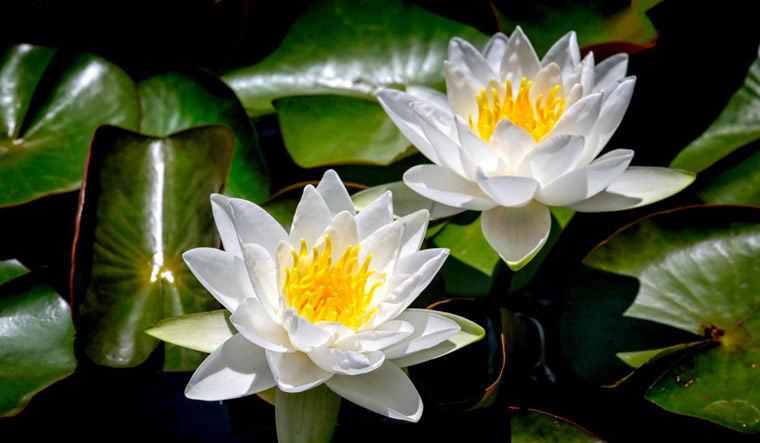Researchers have unravelled the genome of water lily—Nymphaea colorata—and have also revealed the activity pattern of its genes, findings that have helped shed light on the early evolution of all flowering plants. The scientists, including those from Pennsylvania State University (Penn State) in the US, identified 14 chromosomes and more than 31 thousand protein-coding genes in the water plant.
"Water lilies have been an inspiration to artists like Claude Monet because of their beauty and important to scientists because of their position near the base of the evolutionary tree of all flowering plants," said Hong Ma study co-author, and a professor of biology at Penn State.
"I previously contributed to the sequencing and analysis of the genome of Amborella, which represents the earliest branch to separate from other flowering plants, but Amborella lacks big showy colorful flowers and attractive floral scent, both of which serve to attract pollinators in most groups of flowering plants. We were interested in the water lily genome to help us understand how these traits evolved," Ma added.
The study, published in the Journal Nature, compared the water lily genome to those of Amborella, other angiosperms, and several gymnosperms -- the group of seed-bearing plants that do not produce flowers.
Based on the study, the researchers confirmed the position of Amborella, which shares some characteristics with the gymnosperms, as the earliest of currently living angiosperms to separate from other flowering plants.
Water lilies, they said, were the next branch to diverge from a third branch, and a fourth very large group called the mesangiosperms, which contains over 99 per cent of all living flowering plants.
"If we make an analogy to mammalian evolution, Amborella has a similar position to that of the platypus and other egg-laying mammals. The platypus is a mammal because it feeds its young with milk, but it lays eggs like birds or reptiles," Ma said.
He added that Amborella, like gymnosperms, has separate male and female plants, but the water lily has male and female reproductive parts within a single flower.
"This makes the water lily more similar to the vast majority of other flowering plants, so having the genomes of both Amborella and water lily can help us to better analyze the evolutionary transition from gymnosperms to angiosperms," he explained.
The scientists also analysed the expression of genes involved in flower colour between two species of water lily, and identified important proteins responsible for blue petals.
"Having the water lily genome allows us to explore these important traits in flowering plants and especially among horticultural plants. It's likely that brightly coloured flowers and floral scent evolved through an interaction with pollinators and such flowers are ultimately extremely important for the success of flowering plants," Ma said.



